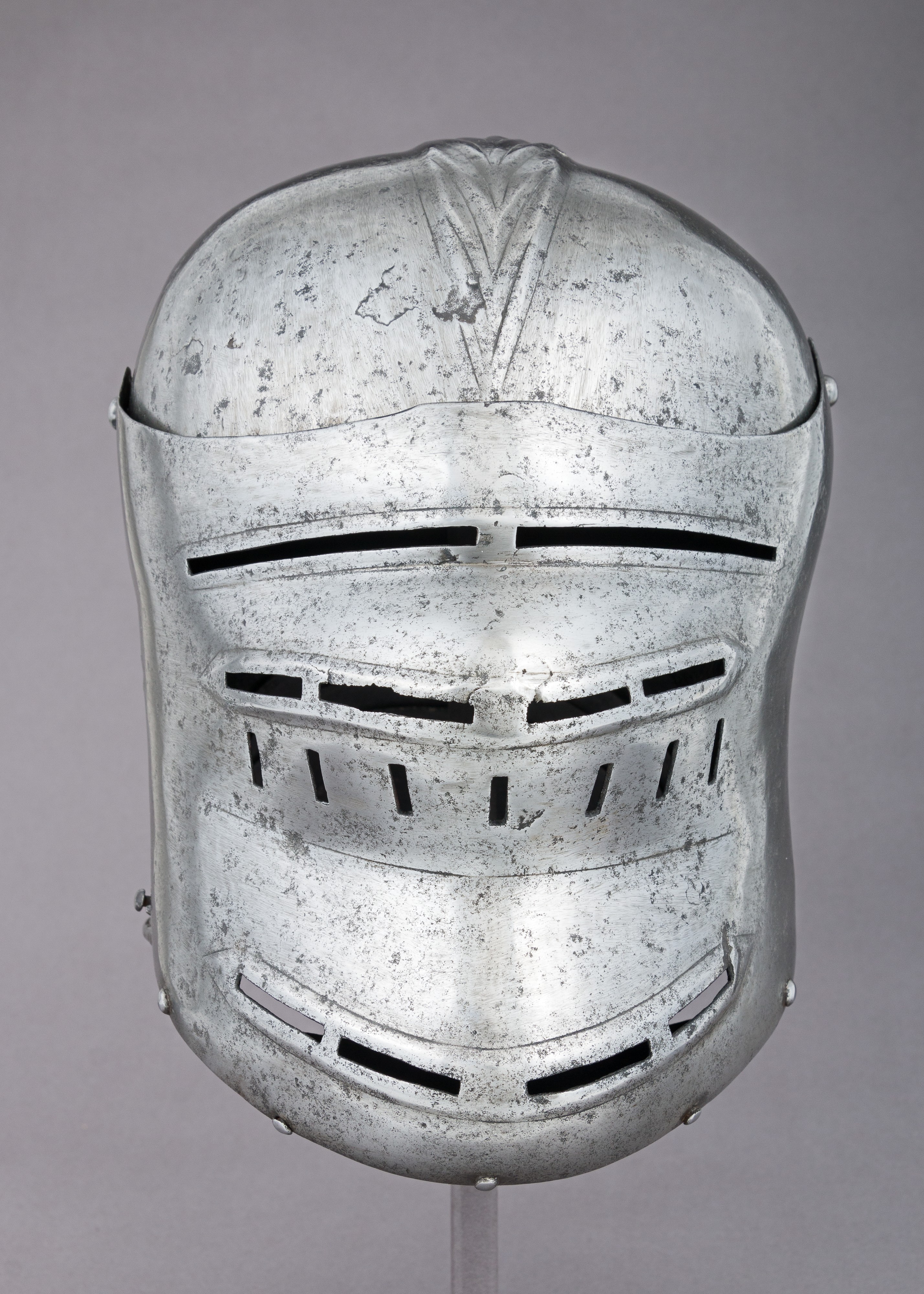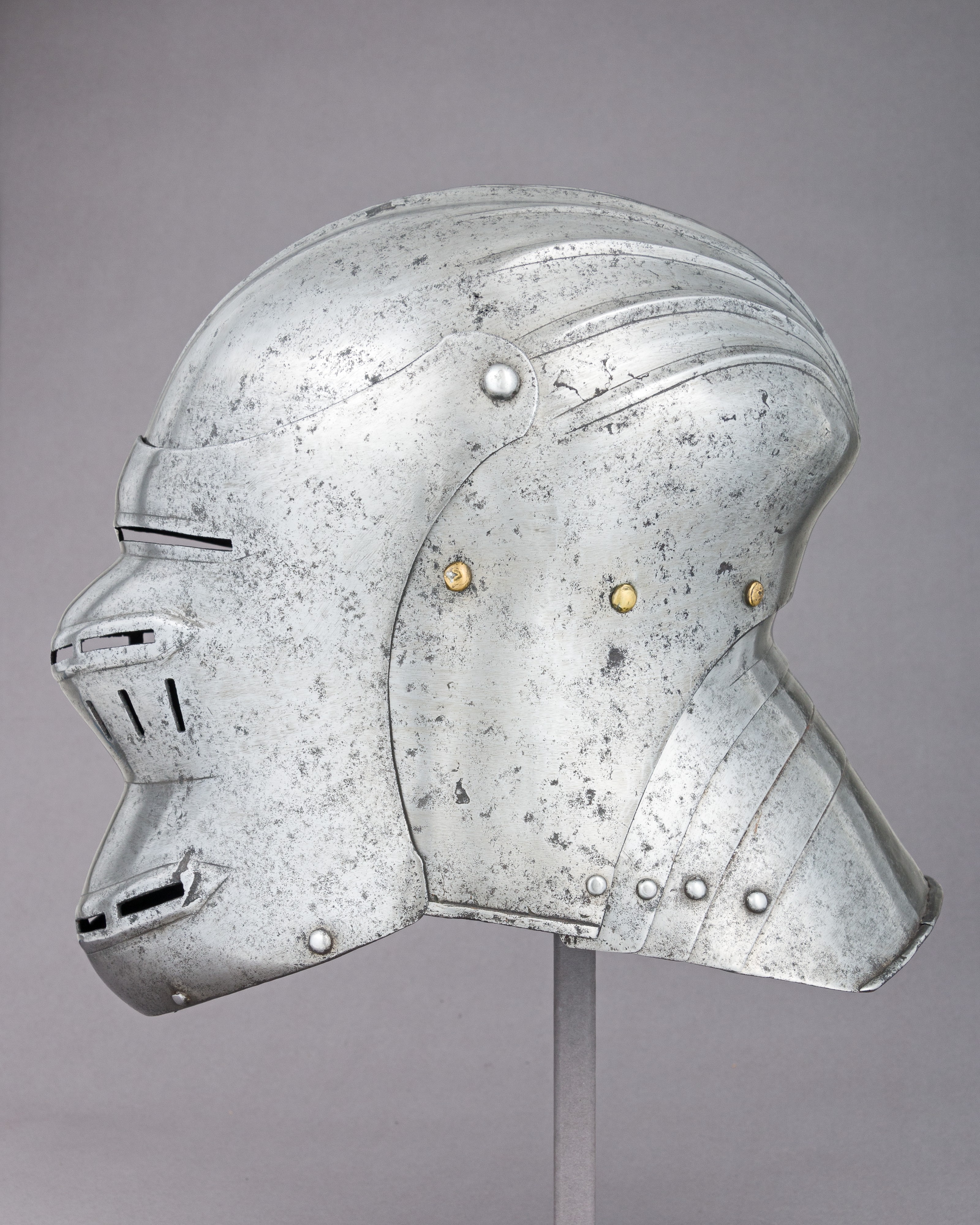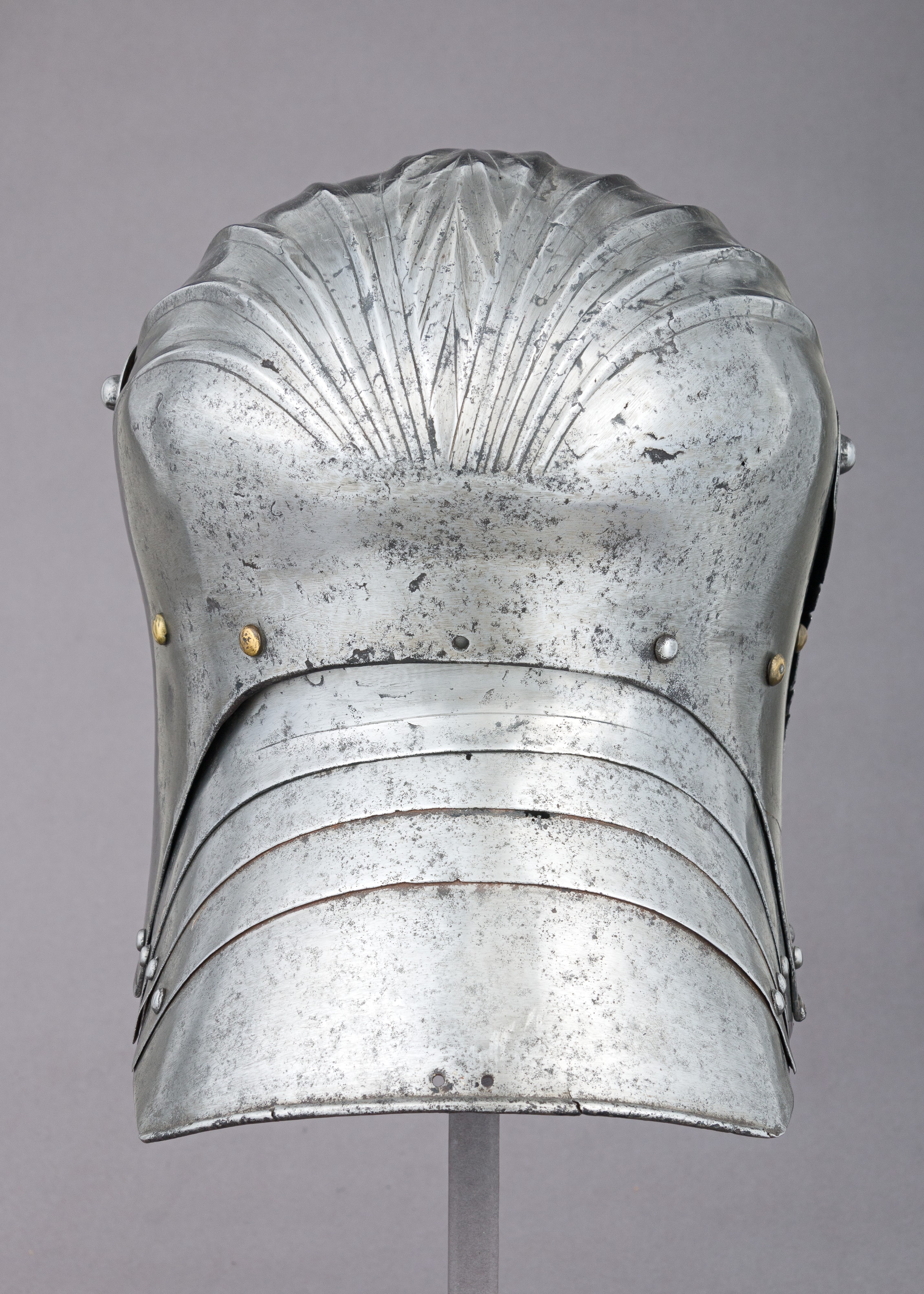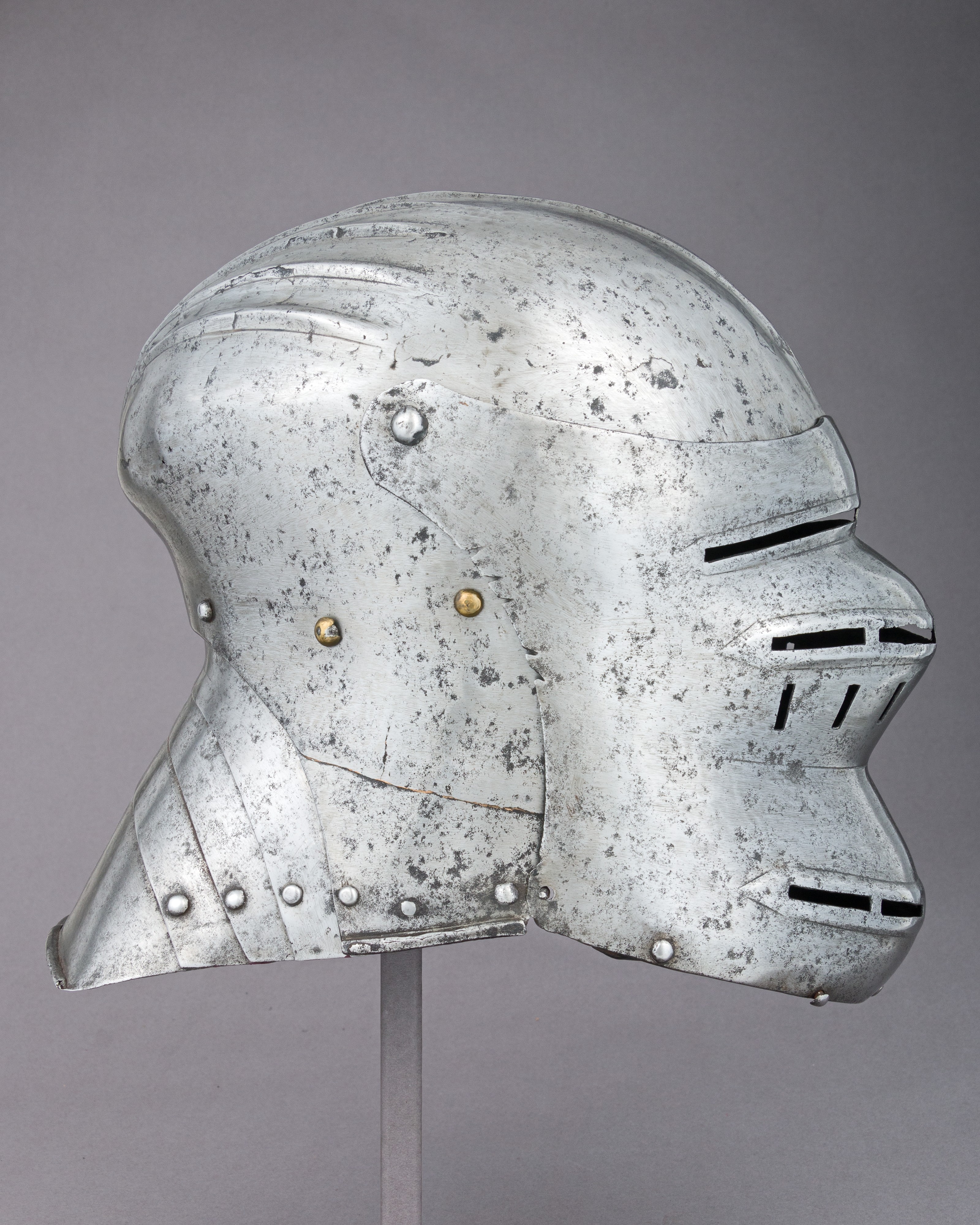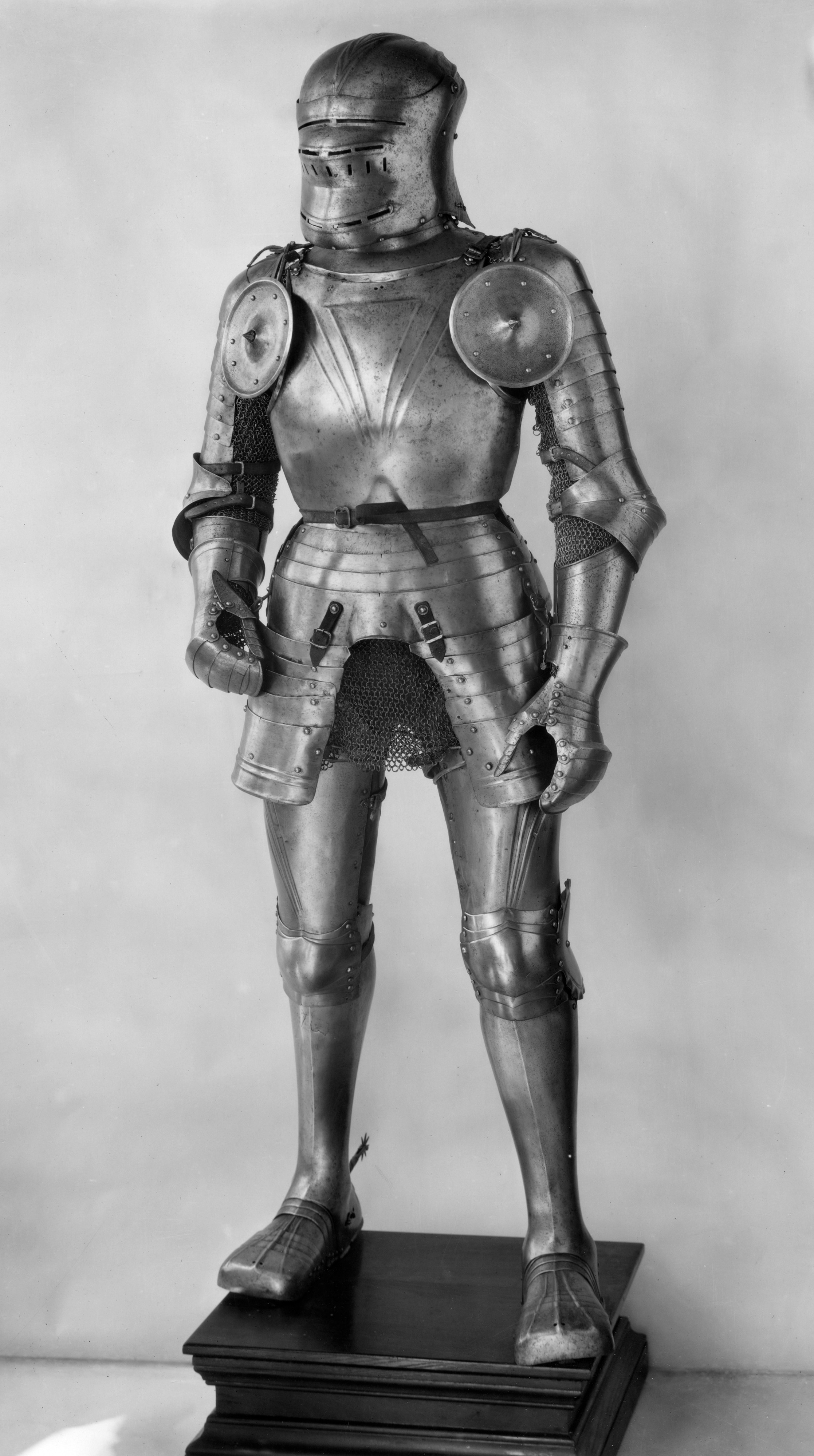Sallet
Armor was made in southern Germany and Austria, areas rich in iron ore, since the early Middle Ages. By the fifteenth century, the armorers of this region had achieved an international reputation that rivaled the fame of their counterparts in northern Italy. Augsburg, Landshut, Nuremberg in Germany, and Mühlau and nieghboring Innsbruck in Austria were the major armor-producing centers. Their armorers could equip entire armies while also fulfilling personal commissions for the nobility throughout western Christendom. The patronage of the upper nobility spurred the leading armorers to develop technical innovations and decorative styles that set international standards of quality and beauty. Emperor Maximilan I (1459–1519) employed dozens of armorers to make battle and tournament armors for his personal use and as imperial gifts. Chief among these armorers was Lorenz Helmschmid (about 1445–1516) of Augsburg, possibly the most talented German armorer of the late fifteenth to early sixteenth century.
Due to rights restrictions, this image cannot be enlarged, viewed at full screen, or downloaded.
This artwork is meant to be viewed from right to left. Scroll left to view more.


